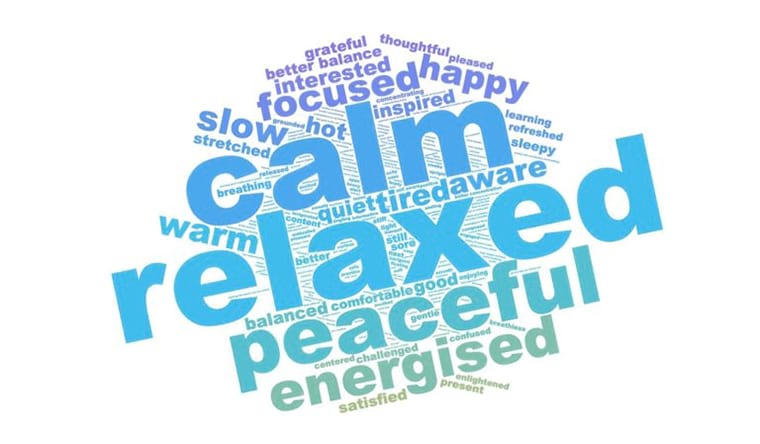Can spinning a ball on a cord really improve wellbeing? Scroll down to read the results of the first clinical study on poi and health, or download our free guide for more info on this research and subsequent studies.
Study Overview
In 2018, the first scientific study on the benefits of poi was conducted at the University of Auckland by Dr. Kate Riegle van West. Seventy-nine healthy older adults participated in the double-blind randomized controlled trial. The aim of this study was to investigate the effects of International Poi (the style of poi practiced worldwide), as compared to Tai Chi, on physical, cognitive, and emotional health. Participants attended International Poi lessons or Tai Chi lessons twice a week for four weeks. Tests were conducted one month before, immediately before, immediately after, and one month after the intervention. Follow-up questionnaires were administered after each lesson, immediately after the intervention, and one month after the intervention.
Tests
Participants were tested across 3 domains: Physical (balance, bimanual coordination, blood pressure, heart rate, grip strength, lower body strength, manual dexterity, upper limb range of motion). Cognitive (simple and complex attention, cognitive flexibility, motor speed, processing speed, psychomotor speed, reaction time, working memory, composite memory). Emotional (psychological well-being). These domains were measured a total of 4 times (twice before and twice after the poi or Tai Chi lessons). All tests were safe, non-invasive, and standard means of measuring physical, cognitive, and emotional function.
Intervention
International Poi lessons were taught by Kate Riegle van West, the principal investigator for this study. The lessons focused on exploring and controlling the timing, plane, and direction of the poi with an awareness of ones body in relation to the poi. This was done through specific movements, such as the figure 8, butterfly, chasing the sun, flowers, and pendulums. Each lesson began with a warm up stretch, and concluded with a cool down stretch.
Tai Chi lessons were taught by Bruno Rubini, a full time Auckland area instructor with over 30 years of Tai Chi Chuan experience. A typical lesson had 3 phases: Energising Joints (strengthening the joints and tendons through a specific set of movements), Silk Reeling, Chen Style (basic warm up movements to connect the upper and lower body) and Tai Chi Qigong Shibashi (using movements from the Yang style Tai Chi Chaun, with an emphasis on synchronizing 18 movements with proper breathing techniques).
Results
The quantitative results show that immediately post intervention both groups improved balance, grip strength, and simple attention. Tai Chi also improved systolic blood pressure. This shows that the means of measuring were sensitive to the expected effects, because the findings are consistent with previous research on Tai Chi. It also shows that the International Poi group improved right alongside the Tai Chi group, meaning International Poi is as good as an activity which is considered a gold standard of exercise for older adults. In addition, the results cover the hallmarks of frailty: balance, cardiovascular function, strength, and memory. This is particularly exciting for thinking about poi as a tool for maintaining or improving quality of life in old age.
The qualitative results can be viewed as follows: you can read the results of the Tai Chi group questionnaire or the International Poi group questionnaire, which was administered immediately after the intervention. You can also view the word cloud results below, which are a reflection of the question “What 3 words best describe how you are feeling?” which was asked after each lesson. The more times a word was said, the bigger it is.


Conclusion
This study investigated the effects of poi, compared with Tai Chi, on physical and cognitive function in healthy older adults. Immediately post intervention, both groups improved balance, grip strength, and attention. Tai Chi also improved systolic blood pressure. These are exciting results, especially when thinking about maintaining quality of life as we age.
Learn More
You can read the full dissertation about this study on Academia.edu , Research Gate, or the University of Auckland thesis database. You can read also read this article about published in the peer-reviewed Journal of Aging and Physical Activity. There is also a full documentary below, which gives you a behind the scenes look at the study, following participants before, during, and after taking part.
Press

TVNZ One News interviews poi study participant Marlene Stratton along with Kate Riegle van West to discuss the health benefits of poi for older adults.

Radio New Zealand article weaves together scientific data and interviews with kapa haka performer Puti Mackey, poi research participant Jocelyn Fausett, and researcher Kate Riegle van West.

Te Kāea, Māori Television nightly news interviews Kate and her participants about the first research study on poi, and opportunities to continue poi / health research in the future.

Hania Douglas from Te Karere, a New Zealand news and current affairs programme broadcast in the Māori language, interviews Kate and study participant Marlene.

Tim Wilson from TV ONE’s Seven Sharp gives poi a go and speaks with Kate about International Poi’s potential to keep older adults physically and cognitively fit.

“The exercise every over-60 should be doing.” Tracy Adshead interviews Kate Riegle van West about the health benefits of poi for older adults in this article on www.oversixty.com.

Kathryn Ryan from Radio New Zealand’s Nine to Noon program interviews Kate about the poi clinical trial, what she’s found out so far, and implications for the future.

Kate speaks about how learning new things (like poi!) can be fun and good for your health on 95bFM’s Ready Steady Learn.
